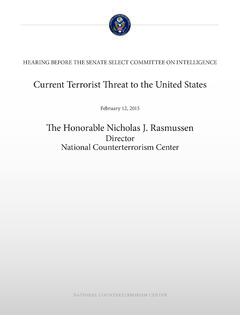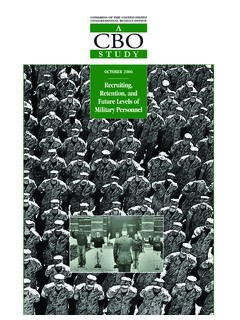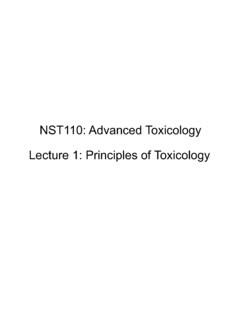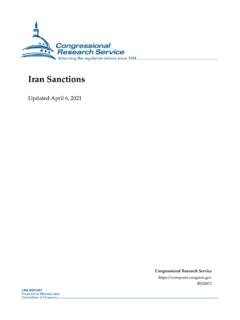Transcription of American Psychological Association (APA)
1 IN AMERICA : THE STATE OF OUR NATIONSTRESS IN AMERICA : THE STATE OF OUR NATIONIn August 2017, the American Psychological Association (APA), conducted its annual Stress in AmericaTM survey to investigate Americans relationship with stress how stressed they feel, what keeps them up at night and how they deal with the stress in their lives. The survey was conducted by Harris Poll on behalf of has conducted the annual survey for more than a decade, and money and work have consistently topped the list of stressors. In 2017, however, after adding a question with a list of additional stressors, the survey revealed a common new source of significant stress: the future of our nation. While the public s overall stress level remains the same, on average, compared to last year, Americans are more likely to report symptoms of stress, which include anxiety, anger and fatigue. CONTINUED POLITICAL STRESSThe 2016 presidential election season proved to be a somewhat or very significant source of stress for more than half of Americans (52 percent), as suggested by last year s survey results.
2 In the August 2017 survey, while money (62 percent) and work (61 percent) remain common stressors for Americans, slightly more Americans report significant stress about the future of our nation (63 percent).1 A significant majority of adults from both political parties say they feel stress about the future of our nation, though the number is significantly higher for Democrats (73 percent) than for Republicans (56 percent) and Independents (59 percent). And nearly six in 10 adults (59 percent) report that the current social divisiveness causes them stress when thinking about the nation. In 2017, many Americans say they are stressed about at least one issue facing our nation, and a majority of adults (59 percent) said they consider this the lowest point in our nation s history that they can remember a feeling that spans generations, including individuals who have lived through World War II and Vietnam, the Cuban Missile Crisis, the September 11 terrorist attacks, and high-profile mass These are responses to two separate survey questions about what issues adults reported as significant sources of stress in their IN AMERICA : THE STATE OF OUR NATIONWhen asked what specific issues in our country cause them stress, Americans most common responses were health care (43 percent) and the economy (35 percent).
3 Additional issues causing stress for about three in 10 Americans include trust in government (32 percent), crime and hate crimes (31 percent), and terrorist attacks in the United States (30 percent). Around one-quarter of adults (28 percent) cited high taxes as a source of stress, while one in five Americans cited unemployment and low wages (22 percent) and climate change and environmental issues (21 percent) as causes of stress when thinking about the ACROSS DEMOGRAPHICSThe 2017 survey results reveal a change in several previous patterns of stress levels related to gender, race and ethnicity, and WIDER GENDER GAPS ince APA began conducting this survey, women, on average, have reported higher stress levels than men, though generally the changes in stress levels have moved in the same direction each year. In 2017, results showed a slight but not significant shift, as women experienced an increase in their stress levels (from an average of in 2016 to in 2017) and men s stress levels dropped (from to ).
4 Not only do stress levels vary between men and women, but the reported stressors themselves differ as well. Though one in four men (25 percent) feel stress related to hate crimes, wars and conflicts with other countries, and terrorist attacks in the United States, women are significantly more likely to report experiencing stress related to these issues. Women say that hate crimes (37 percent), wars and conflicts with other countries (36 percent), and terrorist attacks in the United States (35 percent) cause them stress when thinking about our also may experience different stress levels depending on their race. Though White men report an average stress level of , Black and Hispanic men reported experiencing significantly higher stress, with both groups reporting an average stress level of IN AMERICA : THE STATE OF OUR NATIONOLDER ADULTS STRESS ON THE RISEO lder adults (72+ years of age in 2017), on average, have had the lowest stress levels among the generations since the survey The stress levels of older adults (classified as Matures in the Stress in America survey) this year remains the lowest ( on a scale of 1 to 10) among the generations, but their stress levels increased slightly from last year ( in 2016).
5 This increase was greater than the change in stress levels for the other generations. As they have since 2014, Millennials continue to have the highest reported stress levels, with this year s survey finding an average stress level of , a slight increase from 2016 ( ). For Boomers and Gen Xers, stress levels decreased slightly since 2016, to (from ) and (from ), respectively. Sources of stress vary by generation. When asked to think about the nation, the economy was most likely to be cited as a cause of stress for nearly two in five Millennials (38 percent). However, health care is most likely to be a source of stress for Gen Xers (47 percent) and Boomers (49 percent). Older adults were most likely to report that trust in government (45 percent) is a stressor when thinking about our nation. Similar percentages of each generation believe this is the lowest point in our nation s history that they can remember, with around three in five Millennials (59 percent) and Gen Xers (61 percent) and more than half of Boomers (57 percent) and older adults (56 percent) agreeing with this In the purposes of this survey, generations of adults are grouped as follows: Millennials (18 38 years old), Gen Xers (39 52 years old), Baby Boomers (53 71 years old), Matures (age 72 or older).
6 IN AMERICA : THE STATE OF OUR NATIONA RACIAL STRESS DIVIDEIn the 2016 survey, Black adults and Hispanic adults reported decreased stress levels from the previous year, with Hispanic adults experiencing a particularly large drop in their stress levels ( in 2015 to in 2016, on a scale of 1 to 10). The 2017 survey tells a different story: Hispanic adults experienced an average stress level of and Black adults overall stress level changed from in 2016 to in 2017. The stress level for White adults remained the same as in 2016 ( ). One stress symptom lying awake at night is experienced by more than half of Hispanic adults (56 percent), while about four in 10 White adults (42 percent), Black adults (43 percent) and Asian adults (42 percent) report the same survey reveals differences across races regarding sources of stress. Nearly seven in 10 Hispanic adults (69 percent) say that the future of our nation is a significant source of stress the most of any group and significantly higher than the six in 10 White adults (61 percent) who cite this stressor.
7 Seven in 10 Black adults (71 percent) say this is the lowest point in our country s history that they can remember a significantly larger proportion than the number of Asian adults (61 percent), Hispanic adults (56 percent), White adults (56 percent) and Native American adults (54 percent) who feel the same. Black adults are also the group least optimistic about our country s potential for improvement, with more than seven in 10 (72 percent) disagreeing with the sentiment that our country is on the path to being stronger than ever, which is significantly more when compared to White adults (55 percent). Though they do not express as much doubt as Black adults about the direction of the country, slightly more than three in five Hispanic adults (61 percent), Asian adults (63 percent) and Native American adults (61 percent) disagree that our country is on the path to being stronger than crimes as a source of stress are another issue that reveals a significant racial divide: Only around one-quarter (27 percent) of White adults say that hate crimes cause them stress when thinking about our nation, compared with around two-fifths of Hispanic adults (37 percent), Native American adults (38 percent) and Black adults (41 percent), as well as more than one-third of Asian adults (34 percent).
8 NO GEOGRAPHIC BOUNDARIES FOR STRESSR egional differences were a particularly common discussion topic during the coverage of the presidential campaign, and these differences usually reveal themselves in this survey s data on stress levels throughout the country. However, in 2017, regional differences in stress levels were non-existent, with the East at on a scale from 1 to 10 and the South, Midwest and West experiencing the same level of But, those in the West are more likely to consider the future of our nation to be a somewhat or very significant source of stress (70 percent) than adults in the East (60 percent), Midwest (56 percent) and South (63 percent).THE NEWS AS A SOURCE OF STRESSL ooking at Americans news consumption and social media habits can provide some insight into why the state of our nation and its uncertain direction have become such significant sources of stress. Americans care about staying informed, with most (95 percent) saying they follow the news regularly and 82 percent saying they check the news at least once each day.
9 For nearly one in 10 Americans (9 percent), a news check-in at least every hour is the norm, and one in five Americans (20 percent) say they check their social media constantly, a significant increase from the 17 percent in 2016 who reported such many Americans, news consumption has a downside. More than half of those surveyed (56 percent) say that while they want to stay informed about the news, doing so causes them stress. Further, many Americans (72 percent) say the media blows things out of proportion. STRESS FACTORS INCREASINGLY AFFECTING AMERICANS WELL-BEINGA mericans stress levels in 2017 are consistent with those in 2016, with an average stress level of (on a scale of 1 to 10) across both years. Though Americans stress levels have remained consistent, they are more likely to report feeling the effects of stress in this year s survey than they did in the prior year. For nearly half of Americans (45 percent), lying awake at night in the past month was one stress outcome, as opposed to four in 10 (40 percent) who had IN AMERICA : THE STATE OF OUR NATION reported sleeplessness in 2016.
10 The survey also revealed a significant increase in the percentage of Americans who had experienced at least one symptom of stress in the past month, from 71 percent in 2016 to 75 percent in 2017. Of the symptoms reported, around one-third of adults reported experiencing feeling nervous or anxious (36 percent), irritability or anger (35 percent), and fatigue (34 percent) due to their ABOUT THE PRESENT AND FUTUREThis year, Americans expressed feelings of uncertainty and resulting stress due to concerns about a variety of high-profile issues. When asked specifically about the issue of safety for either themselves, their loved ones or in general, two-thirds of adults (63 percent) say they are stressed about crime, with terrorism (60 percent), gun violence (55 percent) and hate crimes (52 percent) being most commonly identifying specific health-related stressors, two in three adults (66 percent) say the cost of health insurance causes them stress.
















